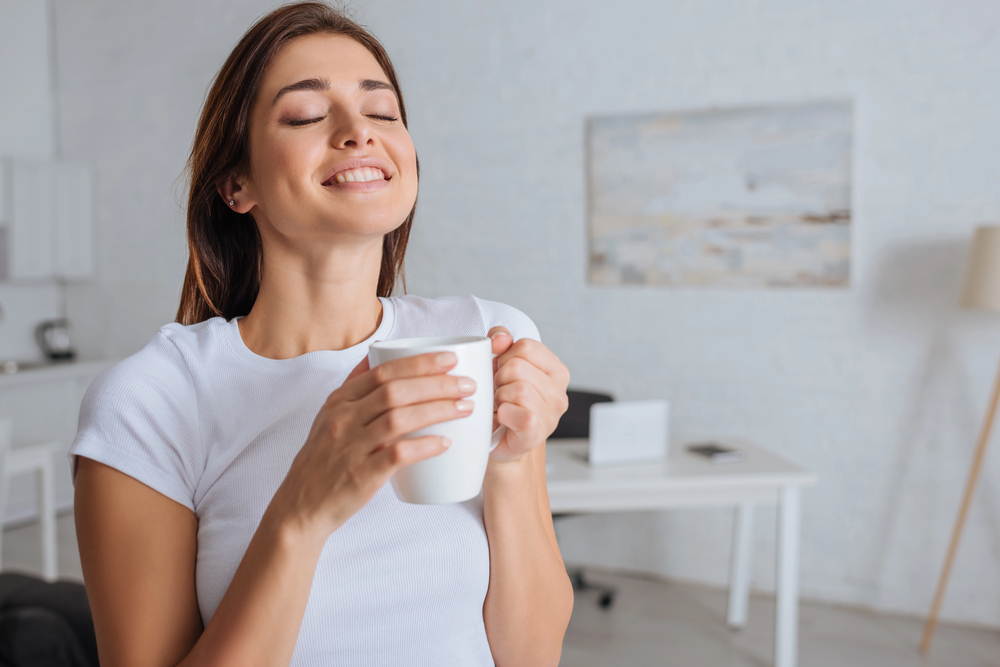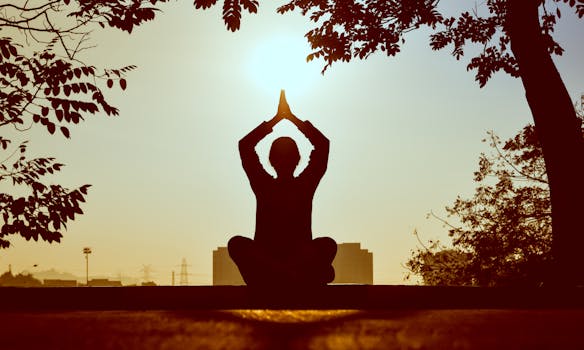Anxiety disorders affect millions worldwide, ranking among the most prevalent mental health conditions. These disorders go beyond normal stress responses, causing persistent fear and worry that can significantly impact daily life.
You’re not alone in seeking relief from anxiety – research shows that 1 in 4 people will experience an anxiety disorder at some point. The good news? Evidence-based techniques offer proven paths to managing anxiety effectively.
This guide explores practical, scientifically-backed strategies you can implement right away:
- Cognitive-Behavioral Therapy (CBT) techniques that reshape anxious thoughts
- Mind-body approaches for immediate symptom relief
- Transdiagnostic methods that address multiple anxiety types
- Relaxation exercises you can practice anywhere
The most powerful aspect of these techniques? You can start using many of them today. Whether you’re dealing with generalized anxiety, panic attacks, or social fears, these strategies provide a solid foundation for building your anxiety management toolkit.
In addition to these strategies, it’s important to consider overall health and lifestyle factors. For instance, maintaining a balanced diet can have a significant impact on your mental well-being. Incorporating healthy snacks into your diet can be particularly beneficial if you are managing chronic conditions like diabetes, as outlined in this ultimate guide for healthy snacks.
Moreover, certain medications such as Phentermine and Ozempic may assist in weight management, which is often a concern for those dealing with anxiety. However, it’s crucial to be aware of the potential side effects of such medications. For example, Ozempic has been linked to severe gastrointestinal issues including bowel injuries, which could lead to legal implications for users.
Let’s dive into understanding anxiety disorders and the proven methods that can help you regain control of your mental well-being.
Understanding Anxiety Disorders
Anxiety disorders manifest in distinct ways, each with unique characteristics and challenges. Here’s what you need to know about the most common types:
1. Panic Disorder
- Sudden, intense episodes of fear
- Physical symptoms like racing heart, sweating, trembling
- Fear of future panic attacks
2. Generalized Anxiety Disorder (GAD)
- Persistent worry about multiple life areas
- Difficulty controlling anxious thoughts
- Physical tension and restlessness
3. Social Anxiety Disorder
- Intense fear of social situations
- Avoidance of social interactions
- Self-consciousness in everyday activities
4. Obsessive-Compulsive Disorder (OCD)
- Intrusive, unwanted thoughts
- Repetitive behaviors or mental acts
- Time-consuming rituals that interfere with daily life
5. Post-Traumatic Stress Disorder (PTSD)
- Flashbacks or nightmares of traumatic events
- Hypervigilance and startled responses
- Avoidance of trauma-related triggers
6. Prolonged Grief Disorder
- Persistent longing for the deceased
- Difficulty accepting the loss
- Significant impairment in daily functioning
These disorders share common symptoms:
- Sleep disturbances
- Concentration problems
- Irritability
- Muscle tension
- Fatigue
Each anxiety disorder requires specific treatment approaches. A strategy that works for panic disorder might not be effective for PTSD. Your symptoms, triggers, and personal circumstances shape the most appropriate intervention for your situation. Professional guidance helps identify the most effective treatment path for your specific anxiety type.
For example, some patients have found relief from their anxiety symptoms through innovative treatments such as Ketamine therapy, which has shown promising results in various cases.
Additionally, it’s important to consider that anxiety can often exacerbate other health conditions. For instance, understanding the impact of Testosterone Replacement Therapy (TRT) on men’s health could be crucial if you’re experiencing anxiety alongside hormonal imbalances.
Furthermore, if you’re struggling with weight management due to anxiety or related stressors, exploring options like Sublingual Semaglutide, a non-invasive diabetes management treatment that also promotes weight loss, might be beneficial.
Cognitive-Behavioral Therapy (CBT) for Anxiety
Cognitive-Behavioral Therapy (CBT) is a highly effective, evidence-based treatment for anxiety disorders. This structured therapy focuses on addressing both the thoughts and behaviors that contribute to anxiety, leading to long-lasting positive change.
Core Components of CBT
Cognitive Restructuring
Cognitive restructuring involves identifying and challenging negative thought patterns that perpetuate anxiety. Through this process, individuals learn to develop more balanced and realistic perspectives, ultimately reducing anxious feelings.
Behavioral Experiments
Behavioral experiments are an integral part of CBT. These involve testing out predictions that fuel anxiety and gathering real-world evidence to challenge those beliefs. By engaging in these experiments, individuals can build confidence and create new neural pathways in the brain.
Specific CBT Protocols for Different Anxiety Disorders
Panic Disorder Treatment
For individuals with panic disorder, CBT focuses on addressing catastrophic misinterpretations of bodily sensations. This may involve systematic exposure to panic-related physical symptoms and learning to ride out panic attacks without resorting to avoidance behaviors.
Generalized Anxiety Disorder (GAD) Approach
Mindfulness techniques are often employed in the treatment of GAD to help individuals break free from worry cycles. Additionally, imaginal exposure to feared scenarios and uncertainty tolerance training are key components of this approach.
Social Anxiety Interventions
Gradual exposure to social situations is a common intervention for social anxiety. Video feedback can also be used to correct distorted self-image, while role-playing exercises and attention-training techniques further enhance therapeutic outcomes.
OCD Treatment Protocol
Exposure and Response Prevention (ERP) is the primary treatment modality for obsessive-compulsive disorder (OCD). This involves systematically facing feared triggers and gradually reducing compulsive behaviors through habituation training.
PTSD-Focused CBT
In the case of post-traumatic stress disorder (PTSD), CBT aims to process traumatic memories safely and facilitate in-vivo exposure to trauma reminders. Restructuring trauma-related beliefs and developing healthy coping strategies are additional goals of this protocol.
Prolonged Grief Treatment
For individuals experiencing prolonged grief, integrating loss acceptance techniques and restoration-focused activities can be crucial. Understanding how medication like Ozempic affects feelings of fullness may also play a role in overall health during this challenging time.
CBT sessions typically follow a structured format, with each session building upon previous learning. You’ll work with your therapist to:
- Set clear, achievable goals
- Learn specific skills and techniques
- Practice these skills between sessions
- Track your progress and adjust strategies
The effectiveness of CBT lies in its systematic approach to managing various mental health issues. However, it’s essential to remember that mental health is interconnected with physical health. For instance, proper hydration is vital for overall wellness and can significantly impact cognitive performance, which is a crucial aspect when undergoing therapy.
Moreover, if you’re considering switching medications for better management of conditions like diabetes alongside anxiety treatment, it’s worth exploring the differences between medications such as Jardiance and Ozempic. These insights can aid in making informed choices about your health.
Lastly, if you’re contemplating a dietary change such as intermittent fasting, it’s important to understand its potential impact on metabolic health and overall well-being.
Mind-Body Techniques for Immediate Anxiety Relief
The mind-body connection plays a crucial role in managing anxiety symptoms. Research shows that physical practices can create immediate shifts in your nervous system, helping to reduce anxiety’s grip on both body and mind.
Deep Breathing Exercises
- Box breathing: Inhale for 4 counts, hold for 4, exhale for 4, hold for 4
- Diaphragmatic breathing: Place one hand on your chest, another on your belly, and breathe so only your belly hand moves
- 4-7-8 technique: Inhale for 4 counts, hold for 7, exhale for 8
Progressive Muscle Relaxation
Practice tensing and releasing different muscle groups in sequence:
- Start with your toes and feet
- Move up through leg muscles
- Progress to core and arms
- End with facial muscles and scalp
Mindfulness and Meditation
- Body scan meditation
- Guided imagery sessions
- Present-moment awareness exercises
- 5-4-3-2-1 grounding technique
Movement-Based Practices
Gentle physical activities proven to reduce anxiety:
- Yoga poses for anxiety relief:
- Child’s pose
- Forward fold
- Legs up the wall
- Tai chi flowing movements
- Walking meditation
These mind-body techniques work best when practiced regularly. You can incorporate them into your daily routine, such as morning stretches, lunchtime breathing exercises, or evening relaxation sessions. These practices complement traditional therapy approaches and can provide immediate relief during anxiety-provoking situations.
Research indicates that combining these physical practices with psychological interventions leads to better outcomes than either approach alone. The key lies in finding techniques that resonate with your personal preferences and lifestyle.
Moreover, regular physical activity is known to have top benefits for mental health, which can further aid in managing anxiety. Additionally, exploring movement-based practices like yoga or incorporating NAD+ injections into your wellness routine may also provide supplementary benefits.
Mind-Body Techniques for Immediate Anxiety Relief
Your body holds powerful tools to combat anxiety through simple yet effective mind-body techniques. These research-backed methods can provide quick relief during anxious moments.
Deep Breathing Exercises
- Box breathing: Inhale for 4 counts, hold for 4, exhale for 4, hold for 4
- Diaphragmatic breathing: Place one hand on your chest, another on your belly, breathe so only your belly expands
- 4-7-8 technique: Inhale for 4 counts, hold for 7, exhale for 8
Progressive Muscle Relaxation (PMR)
PMR reduces physical tension by systematically tightening and releasing muscle groups:
- Start with your toes, progress upward to your face
- Tense each muscle group for 5-10 seconds
- Release completely, notice the sensation of relaxation
Mindfulness and Meditation
Present-moment awareness practices help break anxiety’s grip:
- Body scan meditation
- Mindful walking
- Guided visualization
- Simple breath awareness
Movement-Based Practices
Gentle movement combines physical and mental benefits:
- Yoga poses like child’s pose, cat-cow, and legs up the wall
- Tai chi’s flowing movements promote balance and calm
- Qigong exercises harmonize breath with gentle motion
These techniques work alongside traditional therapy by:
- Activating your parasympathetic nervous system
- Reducing muscle tension and physical stress
- Building body awareness
- Creating a foundation for emotional regulation
Research shows regular practice of these methods can lower baseline anxiety levels and provide immediate relief during acute stress responses. For those navigating life changes such as menopause, incorporating menopause-friendly nutrition can also alleviate symptoms and promote overall health during this transition.
Moreover, enhancing sleep quality through expert tips and techniques can significantly contribute to better stress management. This aligns with the concept of holistic stress management, which emphasizes the importance of mindfulness, physical activity, and breath control for achieving balanced well-being.
Getting Started with Evidence-Based Techniques Today
You can start managing your anxiety effectively right now with these actionable steps:
1. Schedule Professional Support
- Find a mental health professional specializing in CBT or Unified Protocol therapy
- Ask your primary care physician for trusted referrals
- Check online directories of licensed therapists in your area
2. Explore Self-Help Resources
- Download evidence-based anxiety management apps:
- Headspace for guided meditation
- Calm for sleep and relaxation
- CBT Thought Diary for cognitive restructuring
- Read reputable self-help books recommended by mental health professionals
3. Create Your Daily Mind-Body Routine
- Start with 5-minute breathing exercises twice daily
- Practice progressive muscle relaxation before bed
- Join a local yoga class or follow online tutorials
- Set aside quiet time for mindfulness practice
4. Incorporate Wellness Strategies
In addition to the above steps, consider exploring women’s health resources that offer expert advice on wellness, reproductive health, and preventive care. This could further empower you with insights and tips to manage your overall well-being.
5. Track Your Progress
- Keep a simple anxiety journal
- Note triggers, symptoms, and successful coping strategies
- Document small wins and improvements
Remember: managing anxiety is a skill that develops with practice. Start with small, manageable steps and build gradually. Some techniques will work better than others – this is normal. The key is consistency in applying these strategies while being patient with your progress.
Additionally, maintaining a healthy skincare routine can also boost your confidence and contribute to your mental well-being. Explore the latest breakthroughs in skincare technology to enhance your beauty routine.
Lastly, consider trying out butterfly milk, known for its numerous health benefits from antioxidants to eye health, as part of your dietary changes during this journey.
Mind-Body Techniques for Immediate Anxiety Relief
Mind-body techniques are powerful tools for managing anxiety. They are accessible and can have an immediate impact on anxiety symptoms. These evidence-based practices create a foundation for lasting anxiety management:
1. Deep Breathing Exercises
Deep breathing exercises can help calm your mind and body. Here are some techniques you can try:
- Box breathing: Inhale for 4 counts, hold for 4, exhale for 4, hold for 4
- Diaphragmatic breathing: Place one hand on your chest, another on your belly, and breathe deeply to engage your diaphragm
- 4-7-8 technique: Inhale for 4 counts, hold for 7, exhale for 8
2. Progressive Muscle Relaxation
Progressive muscle relaxation involves tensing and relaxing different muscle groups in your body. Follow these steps:
- Start with your toes, tensing each muscle group for 5-10 seconds
- Release the tension while noting the sensation of relaxation
- Move systematically through your body to your head
3. Mindfulness Practices
Mindfulness practices can help bring your attention to the present moment and reduce anxiety. Here are some techniques you can try:
- Body scan meditation: Focus attention on different body parts
- Mindful walking: Notice each step, your breath, and surroundings
- 5-4-3-2-1 grounding exercise: Name 5 things you see, 4 you feel, 3 you hear, 2 you smell, 1 you taste
4. Movement-Based Techniques
Movement-based techniques such as yoga or tai chi can also be beneficial for managing anxiety. Here are some exercises you can incorporate into your routine:
- Gentle yoga poses like child’s pose or cat-cow stretches
- Tai chi movements focusing on breath coordination
- Simple stretching exercises you can do at your desk
These techniques work best when practiced regularly, even during periods of low anxiety. You can start with just 5 minutes daily and gradually increase duration as you become more comfortable with each practice.
It’s important to note that while managing anxiety through these techniques, one should also be aware of any other health issues such as intestinal methanogen overgrowth, which can cause symptoms like constipation due to gut microbes. This could further complicate anxiety management. Always consult a healthcare professional if you’re considering medication like Ozempic for other health conditions during pregnancy as it is not considered safe in such scenarios.
FAQs (Frequently Asked Questions)
What are anxiety disorders and how common are they?
Anxiety disorders encompass a range of mental health conditions characterized by excessive fear and behavioral disturbances. Common types include Panic Disorder, Generalized Anxiety Disorder (GAD), Social Anxiety Disorder, Obsessive-Compulsive Disorder (OCD), Post-Traumatic Stress Disorder (PTSD), and Prolonged Grief Disorder. These disorders are prevalent worldwide and can significantly impact daily functioning.
Why is it important to use evidence-based techniques for coping with anxiety?
Using evidence-based anxiety techniques ensures that the coping strategies employed have been scientifically tested and proven effective. This approach increases the likelihood of managing symptoms successfully and promotes long-term mental health improvements compared to unproven or anecdotal methods.
How does Cognitive-Behavioral Therapy (CBT) help in managing different anxiety disorders?
CBT is a structured psychological treatment focusing on altering maladaptive thoughts and behaviors associated with anxiety. Key components include cognitive restructuring and exposure therapy. Specific CBT protocols target various disorders: for example, catastrophic thinking restructuring plus exposure for Panic Disorder; combining cognitive restructuring with mindfulness for GAD; exposure to social situations for Social Anxiety; exposure and ritual prevention for OCD; trauma-related belief restructuring plus exposures for PTSD; and interpersonal therapy with motivational interviewing for Prolonged Grief Disorder.
What are transdiagnostic approaches, and how do they benefit individuals with multiple anxiety conditions?
Transdiagnostic therapies address common emotional processes across various anxiety disorders rather than focusing on a single diagnosis. The Unified Protocol is one such method that includes modules on mindfulness of emotions, cognitive flexibility, and tolerance of physical sensations. These approaches are especially beneficial for individuals experiencing overlapping or multiple anxiety conditions by providing comprehensive coping skills applicable across diagnoses.
Which mind-body techniques can provide immediate relief from anxiety symptoms?
Mind-body approaches such as deep breathing exercises, progressive muscle relaxation, mindfulness meditation, yoga, and tai chi offer immediate physiological relief from anxiety symptoms. These techniques promote present-moment awareness, reduce stress responses, and complement psychological interventions by addressing the physical manifestations of anxiety.
How can someone start using evidence-based techniques to cope with anxiety today?
Individuals can begin coping immediately by scheduling consultations with mental health professionals trained in CBT or the Unified Protocol. Utilizing reputable self-help resources or apps focused on CBT skills or mindfulness practice is also effective. Incorporating daily mind-body exercises like deep breathing or yoga into routines supports progress. Consistency and patience are crucial in achieving meaningful improvements over time.






